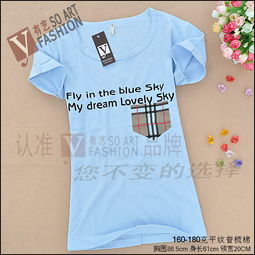服装国际贸易的特点
- 经验
- 2024-05-10
- 647
The fashion industry is a vibrant and dynamic sector that operates on a global scale, with international trade playing a pivotal role in its growth and development. From sourcing raw materials to manufacturing, distribution, and retail, the fashion supply chain spans across continents, making it one of the most interconnected industries in the world. In this discourse, we delve into the intricacies of international trade in the fashion industry, examining key trends, challenges, and opportunities.
Globalization and Supply Chain
Globalization has transformed the fashion industry, facilitating the movement of goods, capital, and information across borders. International trade agreements and trade liberalization policies have opened up new markets and created opportunities for brands to expand their reach globally. However, this interconnectedness also exposes the industry to various risks, including geopolitical tensions, trade disputes, and supply chain disruptions.
The fashion supply chain typically involves multiple stages, including:
- Design and Development: Designers and brands conceptualize and create new fashion collections, often collaborating with suppliers and manufacturers.
- Raw Material Sourcing: Fabrics, trims, and other materials are sourced from suppliers located in different countries, depending on factors such as cost, quality, and availability.
- Manufacturing: Garments are produced in factories, which are often located in countries with lower labor costs, such as China, Bangladesh, Vietnam, and India.
- Logistics and Distribution: Finished products are transported to distribution centers and retail stores around the world through various transportation modes, including sea freight, air freight, and land transportation.
- Retail: Fashion products are sold through various channels, including brickandmortar stores, ecommerce platforms, and specialty boutiques.

Trends in Fashion Trade
Several trends are shaping the landscape of international trade in the fashion industry:
- Ecommerce Boom: The rise of ecommerce has transformed consumer shopping habits, leading to the growth of online fashion retail. Ecommerce platforms enable brands to reach global audiences without the need for physical stores.
- Fast Fashion: Fast fashion brands have gained popularity for their ability to quickly produce affordable clothing inspired by the latest trends. However, fast fashion has also been criticized for its environmental impact and labor practices.
- Sustainability and Ethical Sourcing: There is growing consumer demand for sustainable and ethically sourced fashion products. Brands are increasingly adopting environmentally friendly practices and transparent supply chains to meet consumer expectations.
- Digitization of Supply Chain: Technology is playing a crucial role in optimizing supply chain operations, with innovations such as blockchain, RFID tracking, and predictive analytics improving transparency, efficiency, and traceability.
- Shift in Manufacturing Hubs: Rising labor costs in traditional manufacturing hubs like China have led to a shift towards alternative production locations, such as Southeast Asia, Africa, and Eastern Europe.
Challenges and Opportunities
While international trade presents numerous opportunities for the fashion industry, it also poses several challenges:
- Supply Chain Disruptions: Events such as natural disasters, political instability, and global pandemics can disrupt the fashion supply chain, leading to delays in production and distribution.
- Trade Tariffs and Regulations: Tariffs, trade barriers, and regulatory compliance requirements vary from country to country, impacting the cost and complexity of international trade.
- Intellectual Property Rights: Protecting intellectual property rights, including trademarks, copyrights, and patents, is crucial for fashion brands operating in international markets.
- Social and Environmental Responsibility: Fashion companies are under increasing pressure to address social and environmental issues, including labor rights, fair wages, and sustainable practices throughout the supply chain.
- Market Saturation: Intense competition and market saturation in key markets pose challenges for fashion brands seeking to differentiate themselves and capture market share.
Despite these challenges, international trade offers significant opportunities for fashion brands to expand their customer base, tap into new markets, and drive growth. By embracing innovation, sustainability, and responsible business practices, fashion companies can navigate the complexities of global trade and thrive in an increasingly interconnected world.
Overall, international trade plays a vital role in shaping the dynamics of the fashion industry, driving innovation, diversity, and economic development on a global scale.